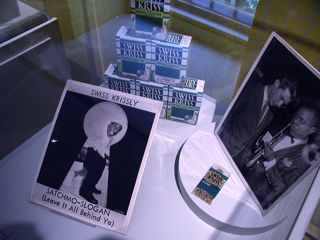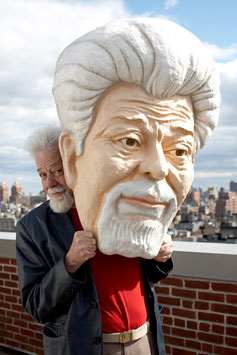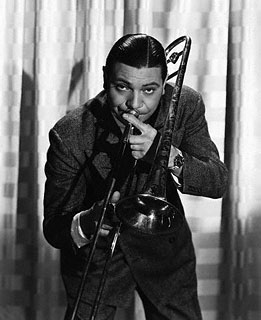In October of 1958, Jack Teagarden and his working band undertook a tour of the near east for the U.S. State Department. The trip covered eighteen countries and 17,000 miles, winding up in January of 1959. The King of Thailand, himself a saxophonist and composer, was happy to see Teagarden, someone whose music he had only enjoyed on recordings up until that time. Naturally, the King decreed a jam session at his palace — it went on for 6 hours by Teagarden’s own account. “You tell your friend Eisenhower that you’re the finest thing he’s ever sent us,” the King said.
Of one concert stop, Teagarden later remembered:
“We played a kind of fair in Laos before about two thousand people, and they just stood there for two hours, with their arms folded, the women with babies on their backs. They didn’t clap, they didn’t say anything. But they didn’t move, either. They stayed until the last note.”
It was a taxing tour for the musicians involved. Because of the ambassadorial mission, the band had to be available for unscheduled concerts and performances, which added to the expected fatigue. In Afghanistan, there was a scarcity of pianos. Most of the band’s members got the flu. Jack’s bassist, Stan Puls, got appendicitis and had to be taken off the itinerary. He was replaced by Lee Ivory, a very capable bassist as well as an active duty serviceman (and apparently a reporter for Stars and Stripes).
In the amazing kinescope shown here, we pick up the band near the end of its tour in Japan. Teagarden looks gaunt — he had contracted uremia during this leg — but is otherwise in good musical form, as he always seemed to be. This TV-film is incomplete — some of the reels were apparently loaned out and never returned. A Japanese band plays and grapples (well) with the style that Teagarden and company tossed off without seeming to try. Jack performs with a studio orchestra next; included are Stars Fell on Alabama, Diane, Peg O’ My Heart, and Indiana. This studio orchestra format was becoming more common in Jack’s later recordings for Capitol Records. The working band returns for When the Saints Go Marching In.
Jack Teagarden’s working band, shown in the film:
- Max Kaminsky, trumpet
- Jerry Fuller, clarinet
- Don Ewell, piano
- Lee Ivory, bass
- Ronnie Greb, drums
In July of 1959, Jack recorded the King of Thailand’s tune, When for Roulette Records.
Teagarden later said of the trip’s mission, “All the music I’ve played has finally paid off. I feel that I did some good for America.”
The Legacy of Eddie Bert
The jazz trombonist Eddie Bert died on September 27. He was born in Yonkers, New York in 1922. Like Jack Teagarden and Trummy Young (whom he studied with), Eddie Bert was a true jazz maverick who played with musicians of broadly ranging styles: Red Norvo, Shorty Rogers, Woody Herman, Stan Kenton, Benny Goodman, and Charles Mingus, among numerous others. Notably, Bert played on the big band orchestrations of Thelonious Monk’s compositions for a concert and recording at NYC’s Town Hall in 1959. As Bert’s New York Times obituary notes, he continued performing until last year.
Eddie Bert can be heard on many recordings — here’s the Eddie Bert link for Apple Music. Bert also played on the famous Jay And Kai + 6 album.
Letters of Note: Music is Life Itself

Here’s a link of note: Louis Armstrong’s 1967 letter to a Marine stationed in Vietnam. Louis was big into the Swiss Kriss — and music, of course. The picture here is the Swiss Kriss display at the Louis Armstrong House in Queens, New York. Link: Letters of Note: Music is life itself [@archive.org].
Roswell Rudd Records An Album Of Standards by Roswell Rudd — Kickstarter

The trombonist Roswell Rudd is up to a new project: recording an album of standards. Help Mr. Rudd out by visiting the link below and adding your bit of support.
Roswell Rudd Records An Album Of Standards by Roswell Rudd — Kickstarter.
Jazz Insights Redux

UPDATE: 3/20/23: Find Dr. Gordon Vernick’s Jazz Insights here, at Archive dot org.
A while back, I had a little write-up about Gordon Vernick and his Jazz Insights radio show that’s also a podcast. Jazz and trombone aficionados should know that in August, Vernick authored episodes featuring five jazz trombone players of the 20s, including Kid Ory, Miff Mole, Jimmy Harrison, Charlie Green and Jack Teagarden. Another good reason to check the show out.
It’s October, and presumably time to start raking leaves. Despite the date on the calendar, though, it’s still getting up to 80º degrees up here in Minnesota! Whoo-hoo!
